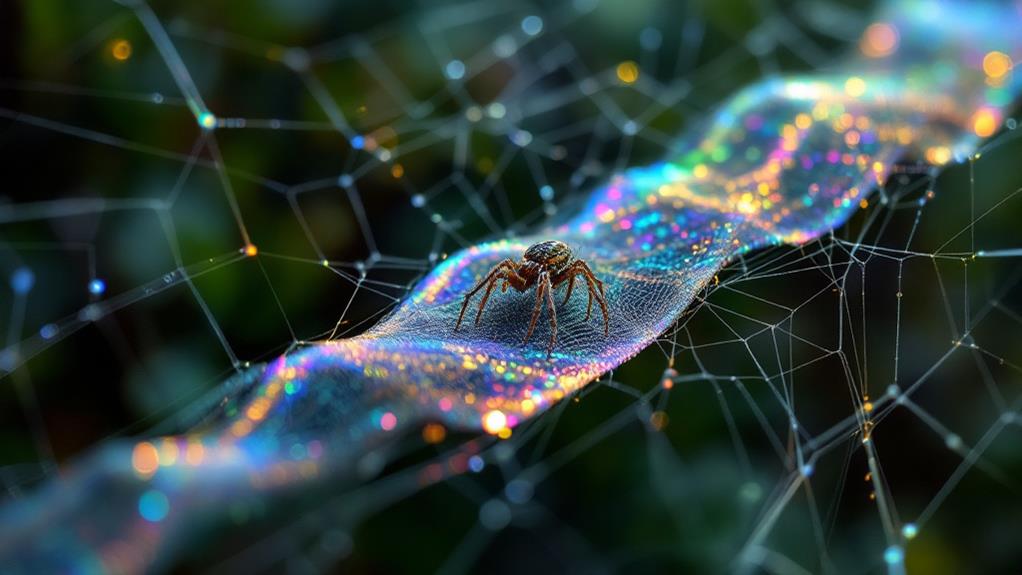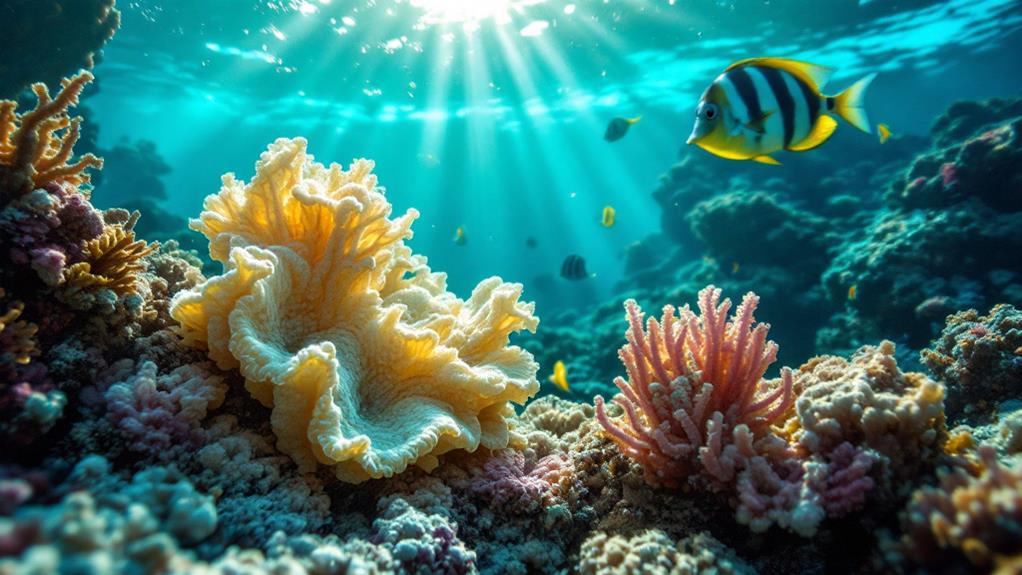The Amazing Origins of Anti-Bacterial Shark Skin: Nature's Design in Action
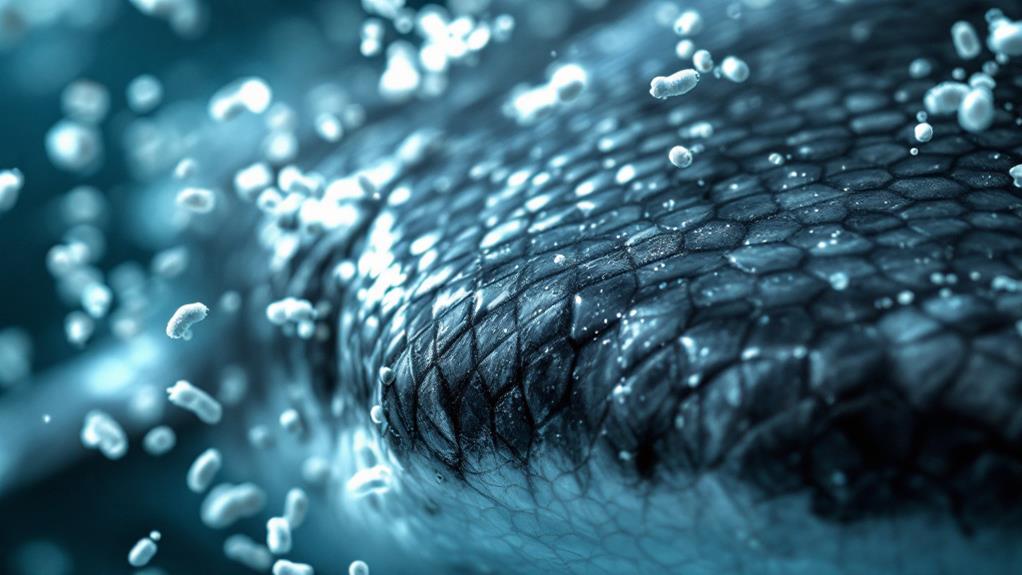
Shark skin's microscopic structure is a marvel of nature's design. Covered in tiny tooth-like scales called dermal denticles, it's not just streamlined for swimming but also a powerful defense against bacteria. These denticles create an inhospitable environment for microbes, making it difficult for them to attach and colonize. This natural anti-bacterial system has evolved over 400 million years, refining its effectiveness. Today, scientists are mimicking shark skin's properties to develop innovative anti-bacterial surfaces for hospitals, homes, and public spaces. From reducing infections to creating self-cleaning materials, shark skin-inspired technology is revolutionizing our approach to hygiene and cleanliness. Plunge deeper to uncover the full potential of this fascinating adaptation.
The Structure of Shark Skin
Shark skin's microscopic structure is a marvel of nature's engineering. You'd be surprised to learn that it's not smooth at all, but rather covered in tiny, tooth-like scales called dermal denticles. These denticles are arranged in a precise pattern that gives sharks their incredible hydrodynamic properties.
When you look closely, you'll see that each denticle has a flexible skeleton and is shaped like a tiny ribbed tooth. They're anchored in the skin and point towards the tail, creating a streamlined surface that reduces drag as the shark swims. This design allows sharks to move through water with minimal resistance, conserving energy and increasing their speed.
The structure of shark skin isn't just about swimming efficiency, though. It also provides protection against parasites and fouling organisms. The rough texture makes it difficult for unwanted hitchhikers to attach themselves to the shark's body. Additionally, the unique surface properties of shark skin have inspired numerous technological innovations, from high-performance swimsuits to more efficient boat hulls and even antibacterial surfaces in hospitals.
Evolution of Dermal Denticles
How did these extraordinary dermal denticles come to be? You'll find the answer in their evolutionary plunge, spanning millions of years. Dermal denticles first appeared in ancient sharks over 400 million years ago, evolving from tooth-like structures in their skin. As sharks adapted to various marine environments, their denticle morphology diversified to serve multiple functions.
Over time, natural selection favored denticles that enhanced swimming efficiency, reduced drag, and provided protection against parasites and abrasion. The ecological significance of these adaptations can't be overstated. Sharks with more efficient denticles could swim faster, conserve energy, and outcompete their rivals for food and mates.
The evolution of dermal denticles hasn't stopped. Modern sharks continue to refine their denticle structures, with some species developing specialized patterns for camouflage or bioluminescence. As scientists study these remarkable adaptations, they're uncovering potential applications in fields like hydrodynamics and antimicrobial surfaces. The story of dermal denticles is a benchmark to nature's ingenuity, showcasing how small changes over time can lead to extraordinary biological innovations.
Microscopic Defense Mechanisms
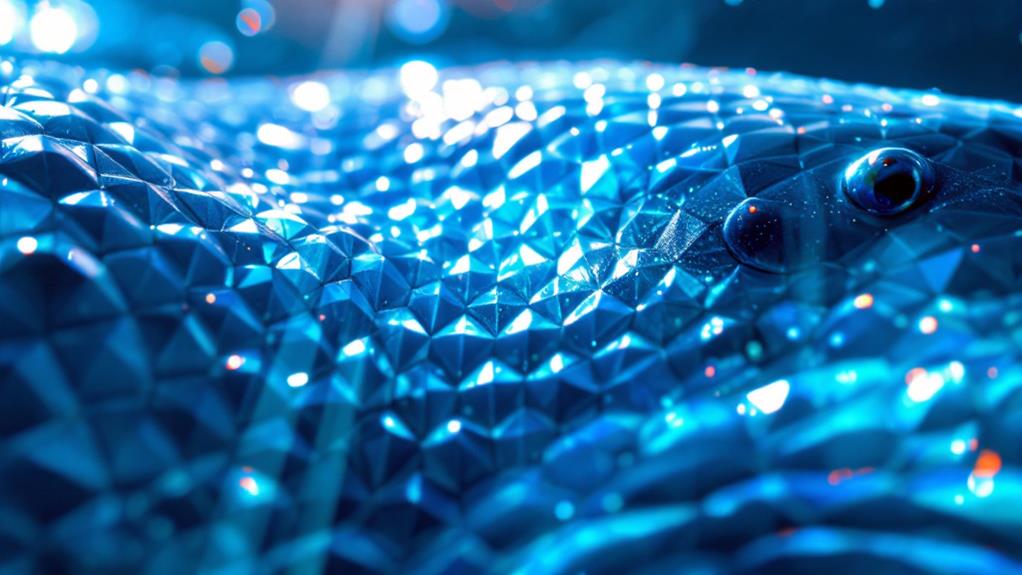
Numerous microscopic defense mechanisms lurk within the intricate structure of shark skin. You'll find that these mechanisms work in tandem to create a formidable barrier against harmful microorganisms. The dermal denticles, which you learned about earlier, play a fundamental role in this defense system.
The microscopic surface patterns of shark skin create an inhospitable environment for bacteria and other pathogens. Here's how these patterns contribute to the shark's defense:
- Disruption of bacterial adhesion
- Creation of a turbulent microenvironment
- Reduction of surface area for colonization
- Promotion of self-cleaning properties
These nanoscale surface features aren't just randomly arranged. They've evolved to maximize the shark's protection against microbial threats. The unique topography of shark skin makes it difficult for bacteria to attach and proliferate. You'll notice that this natural design has inspired various human innovations, from antimicrobial surfaces in hospitals to more hygienic consumer products. By understanding and mimicking these microscopic defense mechanisms, we're tapping into millions of years of evolutionary refinement to solve modern challenges in hygiene and infection control.
Sharks' Natural Cleaning System
Beyond their microscopic defenses, sharks possess an impressive natural cleaning system that keeps their skin remarkably free from unwanted organisms. You'll find that sharks' skin microbiome plays an indispensable role in this system, working in tandem with their physical and immunological defenses.
As you observe a shark, you'll notice its constant movement through the water. This perpetual motion helps to flush away potential colonizers and debris. Additionally, sharks have developed a unique skin microbiome that's adapted to their aquatic lifestyle. These beneficial bacteria form a protective layer, outcompeting harmful microorganisms and preventing them from gaining a foothold.
Sharks' immunological defenses also contribute to their natural cleaning system. Their skin contains specialized cells that produce antimicrobial peptides, which act as a chemical barrier against invading pathogens. Moreover, sharks have evolved a mucus layer that covers their skin, trapping and neutralizing potentially harmful microorganisms.
You'll be impressed by how these various components work together, creating an extensive cleaning system that keeps sharks' skin pristine and functional in the challenging marine environment.
Biomimicry in Technology
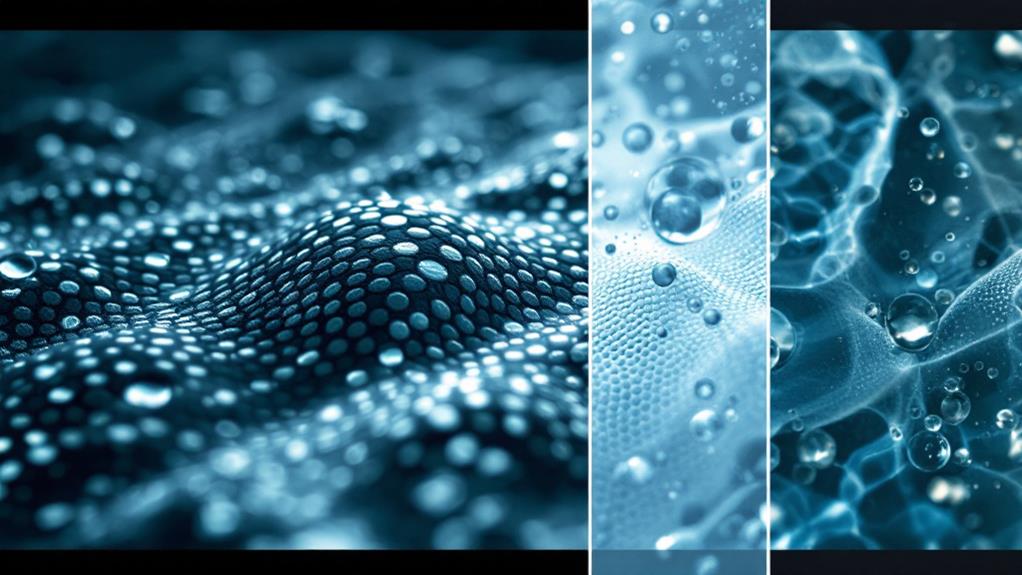
Scientists and engineers have drawn inspiration from sharks' extraordinary skin to develop innovative technologies. This approach, known as biomimicry, has led to advancements in sustainable manufacturing and eco-friendly product design. By studying the unique properties of shark skin, researchers have created materials that mimic its antibacterial and hydrodynamic qualities.
You'll find shark-inspired technologies in various industries, from healthcare to transportation.
- Antimicrobial surfaces in hospitals to reduce infections
- Drag-reducing coatings for ships and aircraft to improve fuel efficiency
- Self-cleaning surfaces for solar panels to enhance energy production
- Swimwear designed to reduce water resistance for competitive swimmers
These innovations demonstrate the power of nature-inspired design in solving complex problems. By emulating shark skin's structure, we're creating products that are not only more effective but also more environmentally friendly. As you investigate the world of biomimicry, you'll uncover that shark skin is just one of many natural wonders inspiring sustainable solutions for our modern challenges.
Medical Applications
The medical field has adopted shark-inspired technology, recognizing its potential to revolutionize patient care. You'll find that shark skin-inspired surfaces are being used in hospitals to combat the spread of harmful bacteria. These innovative materials mimic the microscopic patterns found on shark scales, creating an inhospitable environment for microorganisms to thrive.
In infection prevention, you'll see shark-inspired coatings applied to frequently touched surfaces like door handles, bed rails, and medical equipment. These surfaces substantially reduce bacterial growth, helping to minimize the risk of hospital-acquired infections. You'll also notice that catheters and other medical devices are being designed with shark-like textures to prevent biofilm formation.
For wound healing, researchers are developing shark-inspired dressings that promote faster recovery. These dressings incorporate the unique properties of shark skin to create a favorable environment for healing while preventing bacterial colonization. You'll find that these advanced materials can accelerate tissue regeneration and reduce the risk of complications during the healing process.
As you investigate further, you'll uncover that shark-inspired medical applications continue to expand, offering promising solutions for various healthcare challenges.
Future of Anti-Bacterial Surfaces
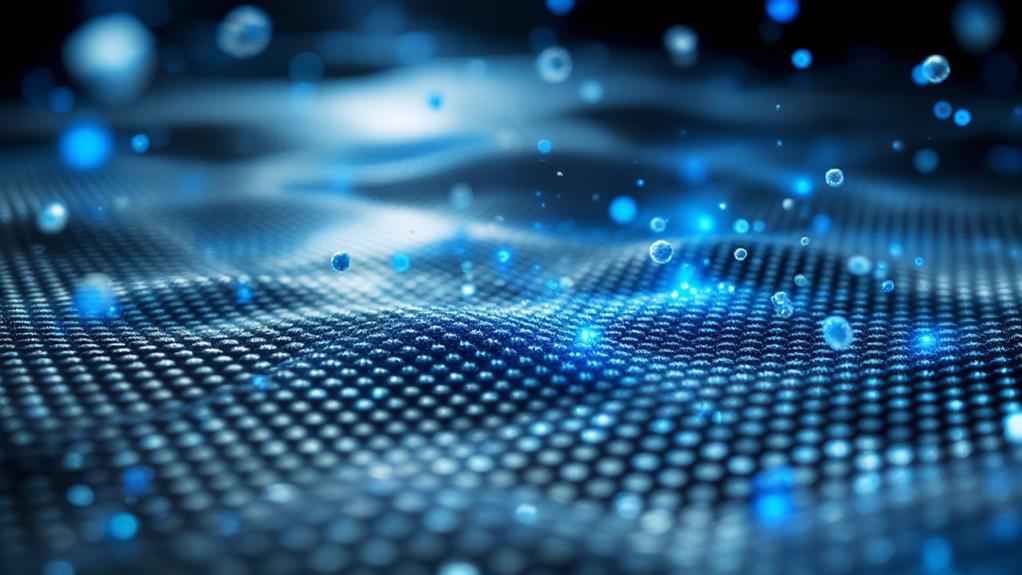
State-of-the-art research in anti-bacterial surfaces promises a future where harmful microbes can't gain a foothold. Scientists are developing innovative materials inspired by shark skin, combining nature's wisdom with cutting-edge, pioneering, innovative technology. You'll soon see these advancements in various aspects of your daily life, from healthcare facilities to household items.
The future of anti-bacterial surfaces includes:
- Self-cleaning surfaces that repel bacteria and other pathogens
- Antimicrobial coatings that actively kill microorganisms on contact
- Smart materials that adapt to different environmental conditions
- Nanotechnology-enhanced surfaces with microscopic bacteria-fighting structures
You'll benefit from these developments in countless ways. Hospitals will become safer, reducing the risk of healthcare-associated infections. Your home will stay cleaner with less effort, as surfaces resist microbial growth. Public spaces, like transportation hubs and schools, will be more hygienic. Even your personal devices might feature antimicrobial coatings, protecting you from harmful germs.
As research progresses, you can expect to see more affordable and widely available anti-bacterial products. The future of anti-bacterial surfaces is bright, promising a cleaner, healthier world for everyone.

